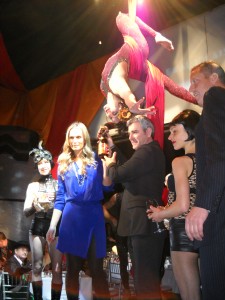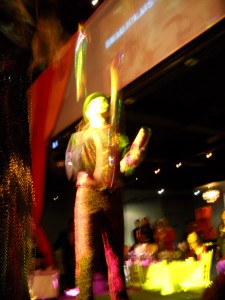The Wine Media Guild hosted Jean-Lous Carbonnier, representative of the International Malbec Association and Ricardo Giadorou of Argentina’s Dolium Winery at its November lunch. Featuring a tasting of Argentine and Cahors Malbecs, attendees had the opportunity to taste and compare these wines.
The Malbec grape originated in France and is currently grown in Bordeaux, the Loire Valley and Cahors. Wines from France’s Cahors region must be produced from a minimum of 70% Malbec, but Merlot and Tannat may also be a part of the blend. Most domains are modest in size, averaging 37 acres. The AOC was established in 1971, which helped to stimulate a rebirth of the area’s vineyards.
Despite Malbec’s association with France, it is planted in much greater numbers in Argentina, having arrives in the 1880s. The Dolium Winery is based in the cru of Lucan de Cuyo and is a gravity flow winery having been built underground. Fifteen percent of the winery’s 200,000 hectares are devoted to Malbec. Ricardo explained that in Argentina’s climate, Malbec was an extremely versatile grape, capable of producing concentrated wines. Compared to their Cahors counterparts, the Argentine Malbecs possess softer and sweeter tannins.
During the tasting, most people agreed that the Argentine Malbecs were much more fruit forward with black fruit and ripe tannins. Conversely, the Cahors wines were denser with tighter tannins and less fruit. A number of the Cahors showed notes of wet leaves and tar. A last minute addition to the tasting were three wines from Viu Manent’s Chilean properties. These wines seemed to be a cross between the Argentine and Cahors styles, with a certain elegance to their meaty and black and red fruit notes. The lone rose, which was from Dolium, was dry, yet fruity, with floral, berries and slight grapefruit pith note in the undercurrent, was a refreshing change to what was otherwise a line up of all red wines.
In addition, I had occasion to blind taste two Argentine Malbecs at home.
Redwood Creek Malbec 2009, Mendoza, Argentina
The wine had aromas of spice, black and bramble fruit and vanilla, with blackberry, blueberry, spice and oak on the palate. It had good acidity, with medium+ body, medium tannins, medium alcohol and medium+ length.
Layer Cake Malbec 2008, Mendoza, Argentina
This wine displayed smoke, oak, blackfruits, and faint notes of meat and mint on the nose, which persisted on the palate with a slightly jammy character to the fruit. A full-bodied wine, it had soft tannins. The length was medium+ in duration, but the high alcohol left a burn at the back of the palate in the finish.
The Redwood Creek wine showed brighter fruit and a more balanced alcohol, while the Layer Cake was more concentrated with riper, jammy bramble fruit.



